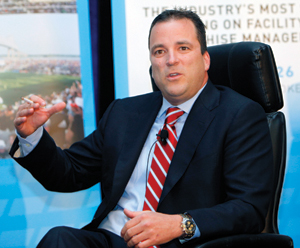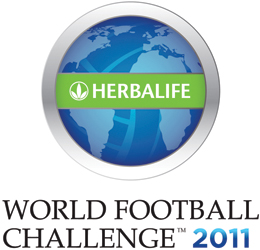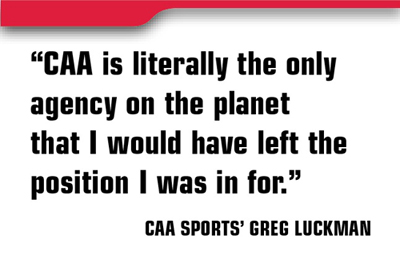When Madison Square Garden and its outside property sales consultant, CAA Sports, went out to sell top-level sponsorships for the soon-to-be-overhauled building in the summer of 2009, their sales effort targeted the airline category first. The good news was that there was immediate interest from five major carriers. The bad news was that the world’s largest airline, Delta, decided to pass early in the process.
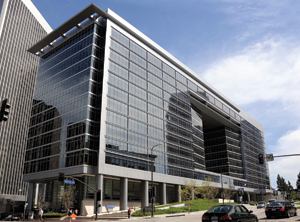 |
The address of CAA’s building, on Avenue of the Stars in Los Angeles, speaks to the company’s heritage.
Photo by: NEWSCOM |
Paul Danforth, head of global sales for CAA Sports, would not take no for an answer.
“Paul called Delta,” said MSG President Scott O’Neil, “He said, ‘I know you guys said ‘No,’ but here is who we have interest from: Boom, Boom, Boom. You gotta come up [to the new MSG] and take a look. You gotta come up and see this. You gotta see what these guys are actually about.”
O’Neil said Danforth, who had a history of working with Delta through his career, told the brand, “You want to own New York? This is your strategy. There couldn’t be a more perfect opportunity.”
In October 2009, Delta became the first signature-level sponsorship partner at the new MSG, with a long-term deal reportedly valued at more than $6 million a year.
Next month marks six years since Creative Artists Agency entered the sports business with the hiring of Tom Condon and Casey Close, two of the industry’s most respected and prominent athlete agents. Since then, the business known as CAA Sports has grown to employ athlete agents in every major sport.
But there has been much more to the business beyond that growth. CAA Sports has negotiated almost $1 billion in sponsorships for sports properties, including MSG and Yankee Stadium. Working in conjunction with joint-venture partner Evolution Media Capital, CAA Sports is advising teams, leagues and prospective franchise owners. There’s also work being done in corporate consulting and a golf consulting business.
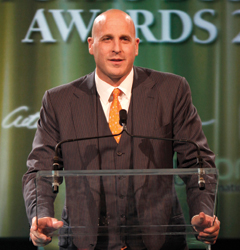 |
Michael Levine (above) and Howard Nuchow were “dazzled” by agency before their hiring as co-heads of CAA Sports and wanted to emulate the firm’s success as an entertainment agency.
Photos: SHANA WITTENWYLER (2)
|
CAA Sports may have been built on the athlete-agent business, but steadily, the company has become a major player in other areas of the sports business.
“The plan from the very, very beginning — and it always was the plan — was, if you could build the best athlete representation practice in the world, you’d be able to use that platform to grow into many other areas of business,” said Howard Nuchow, who five years ago was named co-head of CAA Sports with Michael Levine and David Rone. Nuchow and Levine now operate the business, while Rone left last May to become president of Time Warner Cable Sports.
But while athlete representation has provided the foundation for much of the growth of CAA Sports, the company’s broad development owes much to human relationships — both in regard to internal hires and to outside business deals that were borne out of years in the industry.
Nuchow and Levine had known each other for years from their past work in sports prior to joining CAA in February 2007. When they were approached by CAA President Richard Lovett and other CAA partners about joining the company, Nuchow was working as president of Mandalay Sports Entertainment; Levine was president of Van Wagner Sports Group.
CAA, meanwhile, was a monster entertainment agency, one that was representing A-list actors, writers, directors and producers. George Clooney, Brad Pitt, Sandra Bullock, Meryl Streep, Steven Spielberg, Jerry Bruckheimer — these were just some of the names that made CAA’s business at the time. Sure, Condon, Close and their business were in CAA’s ranks, but the agency’s power was clearly not in sports.
As it turned out, that was a positive for Nuchow and Levine.
“It was just so appealing to have discussions with an agency that was so established and so dominant in their core areas that we thought that there was a big opportunity in the sports world to try to replicate that,” Nuchow recalls.
As far as the prospect of working with Levine, Nuchow said, “We had both grown up in the business, so we understood there was a moment in time, and I think it was the same thing that CAA thought, that you could gather people who really wanted to be a part of what CAA was doing in these other areas of business.”
Levine remembers he could not wait to start his new job. “Howie and I were so dazzled by the agency as I got to know them in the weeks preceding our hires that we really wanted to emulate and replicate the type of success and the way they went about the success in the other parts of the agency in sports,” he said.
By the time Nuchow and Levine were hired, CAA Sports had already grown to have NFL, MLB and NHL athlete representation practices. In addition to Condon and his football business and Close with his baseball experience, CAA had hired NFL agent Ben Dogra and NHL agents Pat Brisson and J.P. Barry.
Levine and Nuchow, for their parts, were hired not only to fill in the talent representation practices in the sports CAA was not in — the agency now represents athletes in the NBA, golf, tennis and soccer, as well — but to build an agency that served other parts of the sports world besides athletes. Most pointedly, that meant leagues, teams, owners and even sponsors.
“In less than six years, our accomplishments in sports have exceeded our expectations, but we are still only at the very beginning,” said David O’Connor, CAA managing partner. “The combined resources, relationships and experience of our colleagues in sports have led to countless opportunities for the agency and our clients across all areas. We’re enthusiastic about what the future has in store.”
As a private company, revenue and financial information about CAA and CAA Sports has been one of the best-kept secrets in Hollywood. Levine and Nuchow would not comment on CAA Sports’ profits. Nuchow would only say, “It’s a good business. We are very proud of the business of CAA Sports.”
PUTTING PROPERTY FIRST
Prior to joining CAA, Levine, as president of Van Wagner Sports, oversaw the growth in that agency’s business in property and signage sales. With that experience now in its ranks, property sales became the first non-athlete representation area of business that CAA Sports targeted.
The timing was fortuitous.
At that time, in early 2007, the new Yankee Stadium was being built, and the job of selling sponsorships for the new building was coming up for bid. The first thing Levine and Nuchow did was hire Danforth, who was chief revenue officer and head of sales for the New York Mets. Here, again, there was an existing relationship, as years earlier, Nuchow had been at the New Jersey Nets, and Danforth had been an intern with the club.
Danforth possessed exactly the kind of knowledge of the New York sports sponsorship market that CAA wanted in going after the prize account of the new Yankee Stadium, an assignment CAA ultimately won in 2007 over other, more established agencies.
“It was a very special and very important piece of business,” Levine said, simply.
Said Nuchow, “It was special because it was highly competitive and it was the first place that, in these other areas of business, we could put a flag down.”
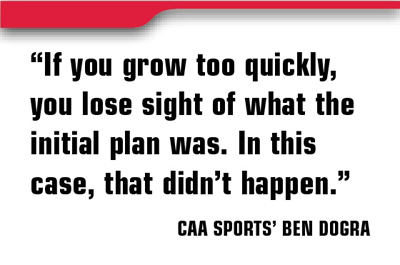 |
CAA Sports secured Bank of America as the top Yankee Stadium sponsor, but only after the deal was delayed because of concerns about bank sponsorships at a time that financial institutions were receiving federal bailout money. That might have taken some of the public shine off the deal, not allowing the agency (or the lender) to tout the new sponsorship for fear of public backlash. Still, the deal served to show the value of relationships that has aided CAA Sports, even at these earliest stages of its business. Levine had done deals with the Yankees in his time with Van Wagner. Nuchow, in his past work as president of Mandalay Baseball, helped negotiate deals with the Yankees in which Mandalay took over operation of the team’s Class AAA affiliate and a Class A club. There was even a tie to the agency’s athlete representation business, with Yankees shortstop Derek Jeter being a client of CAA’s Close — meaning almost from the start, CAA was in the unique position of representing a team and one of its players.
After securing Yankee Stadium as a client, CAA bid on and won the business of selling the corporate sponsorships for MSG. In addition to Delta, the company went on to sell several major sponsorships for the venue, including one to JPMorgan Chase as the highest level, marquee deal for MSG, reportedly valued at $30 million a year. It was a deal that rocked the sports business.
“I can tell you with confidence it is the largest deal that has been done in North America,” said O’Neil, declining to confirm specific numbers. Again, relationship was at the root of the business, as O’Neil had worked with Nuchow at the Nets before later joining the NBA league office and then MSG. He also knew Levine from Levine’s time at the former SFX Sports in the 1990s.
Jay Mandelbaum, head of strategy and business development for JPMorgan Chase, also would not talk about the financials of the MSG deal, but he credited Levine and Danforth for their approach to negotiations. That included being able to provide Chase customers with unique experiences. The resulting Chase deal, he said, allows the bank to provide tailored experiences and access for the bank’s customers, including the ability for Chase customers to get tickets for New York Knicks and Rangers games at the arena, as well as for other events through presale opportunities.
“They were good about telling the story about Madison Square Garden and how it was a very special property, but they were also good about talking about Chase and what our customer base was and what was of interest to us,” Mandelbaum said. “They work as a team, they are very much a team, Mike and Paul. … They get directly involved, so they really think about the details of an arena, the details of events, and what customers are really interested in. Any time they ever presented something to JPMorgan Chase, they were there and directly involved. They don’t assign or delegate it; they do it themselves.”
Levine, Nuchow and Danforth acknowledge that being able to sell the two New York sports facilities was a pretty good way to start CAA’s non-athlete sports business. The deals, in turn, led to other high-profile new business.
“We did Yankee Stadium, we did Madison Square Garden — now we’ve got the [San Francisco] 49ers,” said Danforth, looking to the club’s planned new stadium in Santa Clara, Calif. CAA won the business to sell naming rights and founding sponsorships for that venue last year. “That is an exciting project that we are working on,” Danforth said. “That is sort of the next challenge.”
MOVING INTO OTHER AREAS
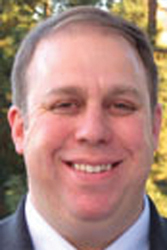 |
Sheiman
|
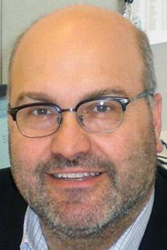 |
Stillitano
|
After hiring Danforth, the next major staff move CAA Sports made was bringing in longtime soccer executives Charlie Stillitano and Jon Sheiman later in 2007. Their hiring got CAA into international property representation, as Stillitano and Sheiman helped CAA secure Chelsea FC and FC Barcelona as clients.
Stillitano and Sheiman’s previous company, ChampionsWorld, created international exhibitions with a number of European soccer clubs.
“We were able to launch an events division through them because of the network they had internationally in soccer,” Nuchow said.
In 2009, Chelsea came to the United States for the first incarnation of the World Football Challenge. The CAA Sports-organized event showcased Chelsea with Club America from Mexico and both Inter Milan and AC Milan from Italy in a round-robin set of six matches, played at stadiums ranging from the Rose Bowl out west to Gillette Stadium in Foxboro, Mass. It was the first time CAA flexed its muscles on the event side. For all the crowds and headlines the challenge attracted, it was not without controversy. The tour was viewed as a challenger to an FC Barcelona tour organized by Soccer United Marketing, MLS’s commercial arm, as well as the biennial Gold Cup, also played at venues across the United States.
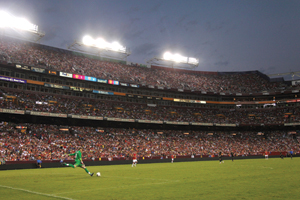 |
The World Football Challenge took CAA Sports onto the events stage.
Photo by: GETTY IMAGES
|
By the time of the next Challenge, last year, the event had grown in myriad ways. Now, there were 13 clubs involved. CAA and SUM executives had worked through their issues — notably, partnering in 2010 to bring Manchester United on a U.S. tour — so there were now five MLS clubs in the Challenge fold for 2011. The lineup of international stalwarts featured Man U, Real Madrid and FC Barcelona, and Herbalife had signed on as title sponsor of the event. Other sponsors in place were Adidas, American Airlines, Degree, Incapital, Konami, Lowe’s and MillerCoors.
“The World Football Challenge is our first step in the creation and management and operation of events in sports,” said Levine. Both he and Nuchow declined to provide details, but both said the development of more events is ahead for CAA Sports.
While the agency was seeing growth on its event business, it also was making inroads in consulting. In May, CAA Sports hired former U.S. Golf Association chief business officer Pete Bevacqua to head up its corporate golf practice. In November, it acquired the golf consulting firm MG Sports Marketing, led by Billy McGriff and Ben Gannett. That addition brought a host of clients into the fold, including Farmers Insurance, Zurich Financial Services and Mitsubishi Electric.
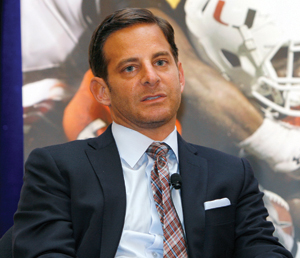 |
Greg Luckman’s arrival last year was key in CAA Sports’ move into corporate consulting.
Photo by: SHANA WITTENWYLER
|
It was also last year that CAA Sports made a key move for its push into the corporate consulting sector. Greg Luckman, who had been CEO of WPP’s sports and entertainment consultancy Group M (a company he had founded in 2007), joined CAA Sports in September.
Luckman said the move was an opportunity he couldn’t pass on because of what CAA Sports’ range of available assets had become — and with more seemingly ahead.
“CAA is literally the only agency on the planet that I would have left the position I was in for,” he said. “Regardless of the category, corporate clients are looking to have that conversation
with their target audience, and aligning [those brands] with what they are passionate about — sports, film, music — that’s the most effective way to begin that dialogue. We are uniquely positioned to put brands in the center of popular culture.”
Since Luckman joined CAA Sports last fall, the agency has signed RBS and Best Buy as consulting clients. He said the company is “actively in development” of more clients. And while Luckman would not discuss financials for the operation — corporate consultancy is a business in which agencies are paid a retainer rather than by a percentage of completed deals — he said he is pleased with the division’s progress in a short amount of time.
“I think clearly the evolution or growth of our company has been talent representation evolving into property representation and sales, into media advisory,” Luckman said. “I feel very fortunate that this next, kind of natural, planned step in our evolution — sports consulting — is an area I get to be a part of to help launch.”
Nuchow and Levine similarly say they expect growth in the division. “Obviously Greg’s only been here a few months,” Nuchow said, “so we are just getting started, but this is a big area of focus for us. We will be expanding in that area.”
NEW CHALLENGES
Considering even the roughly $1 billion in property sales CAA Sports has to its credit, in its short lifetime, among its biggest yet least known impacts has been its advising of sports content owners, whether they are leagues, teams, existing or would-be franchise owners, or college conferences.
It’s a business that has put the company in the middle of some of the biggest transactions in sports.
Most notably, CAA Sports and its joint venture Evolution Media Capital (See story, Page 16) advised the former Pac-10 in business that ultimately led to the conference becoming the Pac-12 — and has the conference poised to launch the Pac-12 Network later this year.
“The Pac-10 was a really landmark and groundbreaking assignment for us, and it was one where EMC was able to tap into a variety of experts around CAA to help them provide advisory services over the last several years to Pac-12 Commissioner Larry Scott,” Levine said.
“The heart of the assignment,” he added, “was the exploitation and negotiation of the Pac-10 media rights, and the result of their efforts has shaped the way the collegiate sports landscape will look for the next 10 to 20 years.”
Scott said he hired CAA in early 2010 after looking at other agencies and seeing that not only would CAA bring along the EMC asset, but that there were other long-term benefits as well.
“I wasn’t just hiring CAA for EMC,” Scott said. “I was attracted to a long-term relationship with people who could help us on many different levels.”
He noted that since the relationship began, Pac-12 officials have had sessions with Lovett and other entertainment-side executives in CAA’s larger business on a range of subjects, including development of the logo for the newly branded Pac-12.
But while CAA Sports has had its share of successes, the gains haven’t come without scrutiny, or even skepticism. If you talk to enough executives in the business — particularly at rival agencies — you get a mixed bag of shrugging acceptance from some, while others question the business model, the company’s approach and its revenue, suggesting even that the gains are all smoke: highly visible activity, but not necessarily a blueprint for lasting success across business lines.
As the argument goes: Think about the roster of veteran, industry heavy hitters that CAA has on staff and what it’s paying out for their salaries. Now imagine how much outside business (or, revenue) must be necessary to cover all the costs.
One executive referred to a natural “honeymoon period” for CAA when it launched into sports but noted that now, “the honeymoon is over.”
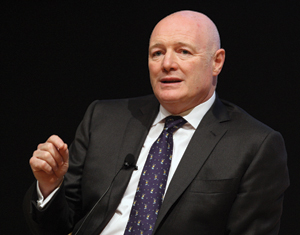 |
Chelsea and Man U veteran Peter Kenyon was one exec who came and left quickly.
Photo by: GETTY IMAGES
|
Critics point to the fact that a number of key executives — touted when they joined the firm — have left the agency in short order.
In 2009, CAA hired Peter Kenyon, who has been credited with helping to build Chelsea and Man U into the global brands they are today, to run its international business. When he was brought on, it was seen as a key hire, one that would make CAA far more relevant in the U.K. and elsewhere overseas. But little resulted from the move, and last October, CAA released a statement that Kenyon was leaving by “mutual agreement” after it decided to restructure its international business operations.
Chris Bevilacqua, the former SCP Worldwide partner and co-founder of CSTV, joined CAA in 2008 to head a new sports media unit, CAA Sports Media Venture. The group, a partnership between Bevilacqua, CAA and EMC, aimed to acquire and operate media companies. Two years later, in 2010, Bevilacqua departed, though he remains a consultant to EMC on select projects.
Baseball agent Close left CAA last year and joined Excel Sports Management, a firm started by prominent basketball agent Jeff Schwartz, taking his best known client, Derek Jeter, with him. (Jeter is co-represented by CAA and Excel for marketing.) Close’s departure wasn’t news at the time, as five younger MLB player agents had been jointly running the division since 2009.
That multiperson structure is a reflection of CAA’s larger corporate culture, one in which collaboration is highly stressed and where many executives operate without traditional business titles. It’s a philosophy that was outlined from the very point when Nuchow and Levine came aboard — a time when Condon and Close, arguably two bigger “names” in the industry than their own, were already in house. If there were to have been a point when the desired business model for CAA Sports would have failed, that might have been it.
Similarly, when NFL agent Dogra left SFX Sports to join CAA in July 2006, he was going from competing with Condon to now working with him. Dogra had seen SFX Sports aim to grow through rapid-fire, roll-up acquisitions of some of the top sports agents in the business. At CAA, he saw a different plan.
“[SFX] grew fast, and there was no plan,” Dogra said. “If you grow too quickly, you lose sight of what the initial plan was. In this case, that didn’t happen. They were growing, but they were growing within the culture of CAA, and that is one of collaboration and teamwork.”
Dogra said that as big as CAA Sports has become, it still has “that small company feel,” noting that he can reach Nuchow or Levine, as well as others across CAA, on the phone whenever he wants.
Still, within the agent space, the transition for CAA’s MLB business did not go unnoticed.
“You can’t have five agents running a division,” said one rival agent. “That’s crazy.”
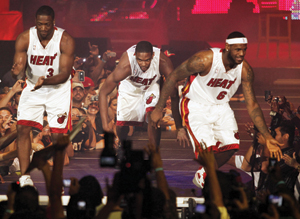 |
With clients (from left) Wade, Bosh and James, CAA Sports starred in the Heat story.
Photo by: GETTY IMAGES
|
CAA also drew heat for its basketball work in 2010. That summer, the agency represented all three of the players who went on to become The Big Three together in Miami: LeBron James, Dwyane Wade and Chris Bosh. Add to that collection the fact that CAA represents Heat President Pat Riley and Miami coach Erik Spoelstra. The resulting criticism was that CAA — not the NBA; but rather, an agency — was able to create one power team in the league, making something exist where previously no such club existed.
CAA agent Leon Rose represents James; agent Henry Thomas represents Wade and Bosh.
“There has been a lot written about trying to create this powerful, villainous type of situation, and I think that is a perception that has been created by others,” Rose said. “But in reality, what this comes down to — and what representing clients always comes down to — is our goal is to accomplish our clients’ goals and wishes.”
Thomas noted that each of the players could have had higher-dollar contracts in different situations, showing how their desire to come together was primarily about winning championships. And while Rose said there’s a “Chinese wall” between CAA Sports’ athlete representation business and the other practices within the company, the relationships that exist throughout CAA — and the connections the company has across industries — do give CAA agents an edge against others in representing clients.
TRUE TO THE CORE
AEG President and CEO Tim Leiweke crosses paths with CAA Sports often. Both firms are based in Los Angeles, and both are involved in some of the biggest deals in the industry.
It’d be natural to think that AEG’s agenda would bump up against CAA’s agenda more often than not.
You wouldn’t know it from Leiweke’s comments.
CAA, Leiweke says, helps AEG on a number of fronts, including consulting with them about the Los Angeles Kings, the Los Angeles Galaxy and on their international business. “When they jumped into this business, a lot of people criticized them,” Leiweke said. “A lot of people probably thought it was all about athlete representation. But the fact is under Mike and Howie, and with the guidance and support of David O’Connor, these guys have built a great consulting business, including working with us.”
CAA and CAA Sports work with AEG on media negotiations, the sale and purchase of franchises, consulting on facility naming-rights agreements, and sponsorship deals, Leiweke said.
“They are well-versed,” he said. “They are very knowledgeable, and what I respect about those guys is they are able to go in and consult with a wide variety of people and maintain relationships with everyone; not pick any fights. Get in and out of these negotiations, and not have any difficulties. If they are representing a college division, someone like the Pac-12, they are able to negotiate rights deals and not make enemies of the people they are saying ‘No’ to.”
Leiweke, O’Neil and Scott, when speaking of their relationships with CAA Sports, said CAA executives operate almost as if they are an extension of the respective executive teams.
“I think it’s a tremendous success story,” Scott said. “There were probably eyebrows raised when the largest entertainment agency in the world said, ‘We are going to be in sports, too’ — because prior to that, it tended to be the other way around: sports marketing agencies trying to get into entertainment. And that never worked out too well.”
And therein lies CAA Sports’ challenge: how to grow from here. As other agencies have tried to create multisport representation businesses, combining athlete representation practices with non-athlete representation ventures, it’s often been said that the star players who are signed provide the “sizzle” for the company, but it’s those other, non-representation segments that make the money. In CAA’s case, that lineup of athlete clients can provide plenty of sizzle. Peyton and Eli Manning, Drew Brees, Roy Halladay, Sidney Crosby, David Beckham and Novak Djokovic, along with Miami’s NBA trio, are just a few of the names on CAA’s star-laden list of 700 athletes for whom contract work, marketing, or both is done.
As CAA Sports looks to grow in its non-athlete representation areas, both Nuchow and Levine said this strength for the agency — the player representation business that was at its core — won’t be forgotten. It will remain at the heart of CAA Sports.
“Our belief from the beginning is that our business begins and ends with a successful athlete rep property,” Nuchow said. “Our belief is it is the right platform to build off of.”
Added Levine, “CAA is in the business of representing stars. Always has, always will be. Our athletes are stars.”




